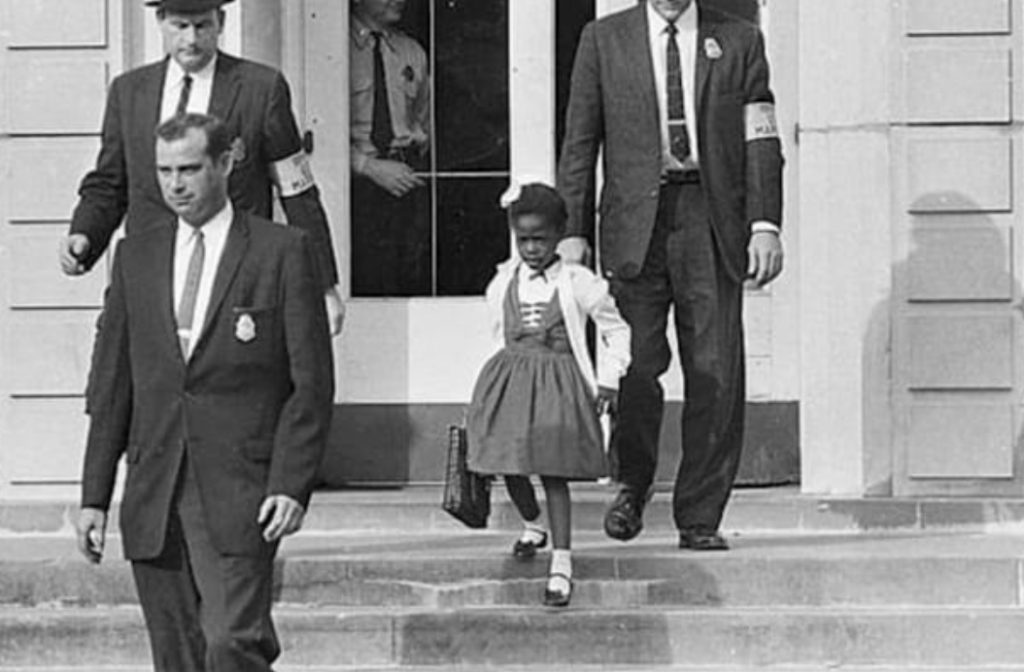It seems so long ago that a little Black girl named Ruby Bridges integrated an all-white elementary school in Louisiana, but students like me still face insurmountable obstacles in white institutions.
Last week marked the 60th anniversary of 6-year-old Ruby Bridges integrating an all-white elementary school in New Orleans. As one of the first Black students to attend a desegregated public school in the country, she faced daily mobs and threats that required federal marshals to escort her in and out of her classes for 6 months. Her bravery as an activist and young scholar will forever be admirable, but, during this time of reflection, it is important to question how much progress has been made around segregation in our education system.
I grew up in a place that was a cultural anomaly: Prince George’s County, Maryland. It is home to the most affluent demographic of African Americans in the country, and thus, when my parents placed me in a private school, my classes were diverse. For this reason, until the age of 13, I did not truly grasp the complete nuances of race because I simply did not have to. My first educators were Black, and for the most part, so were my closest friends. It wasn’t until I went to a predominantly-white high school that I experienced my first bouts of racism and, unfortunately for me, they were extreme.
The private high school I attended was one county over. The school wooed me with its boasts of diversity, new buildings, and a stellar education; however, like other private schools, they, too, fudged their numbers to appear more appealing to minorities and I fell for the trick. I was one of two Black girls in a class of 110 students and in total, there were six Black students in my grade.
Due to my experiences with constant microaggression and racism in high school, my college application process was tricky. I was weary of people’s hands in my hair and casual expressions of the n-word in music at dances. I was still processing an incident in which an elderly white woman with no affiliations to my school was allowed to grab and yell at me on school property, while teachers watched. I was not even 18 and my teacher, a white man, later told me that he believed I had the situation under control. If nothing else, that was a blatant reminder that I would never be safe at a PWI.
Before my PWI experience, I had aspired to attend universities such as Harvard, Berkeley, Stanford, and American, but as I became more culturally aware, those universities’ complicity with racism- as was evident by student accounts similar to mine- became too difficult to ignore.
I remember touring the campus of American University as a senior, awed by its beauty, taken by the location, and swept by its academic programs. At the end of the tour, though, I asked the tour guide about the school’s diversity. Now, as someone who served as a student ambassador for years, I was familiar with the “false truths” my school encouraged me to tell. “We’re working on increasing our diversity,” I was taught to say, which was code for “we don’t have diversity.” I was discouraged when I was met with similar statements from college ambassadors.
The institution itself had some diversity, but the majority of its numbers were from international students, and the community I sought to see representation from made up just a drop.
I did not want to attend another school for four more years, where I would be the only Black face amid thousands of white ones. To strengthen the matter, I found out about an incident that had occurred on campus a year or so before I had toured: several bananas hanged by nooses. The incident came only months after more bananas–tasteless, I know–were thrown at a Black girl’s dorm door on campus. As a Black woman, the racial stereotyping and obvious insinuations of violence on that campus made me extremely uncomfortable, and it completely devalued the importance of my letters of acceptance.
The fear associated with that type of spitefulness was real. As I applied to PWIs, I couldn’t help but wonder if, like Chennel Rowe, if I would be targeted and poisoned by my potential white roommate. Would I be called racial slurs? Would I even have a real support system?
Although no longer segregated by law, fear of experiencing racism on a grander scale than I was used to drove me away from any and all PWIs. The lack of financial support and diversity they offered solidified my decision: I would be attending an HBCU, Howard University.
I’ll admit, my decision to attend Howard might have been self-imposed separation. However, I will maintain that, if PWIs were safer and more accessible financially to minority students then more students would attend. Until that happens, the fact of segregation within elite institutions will not change.
